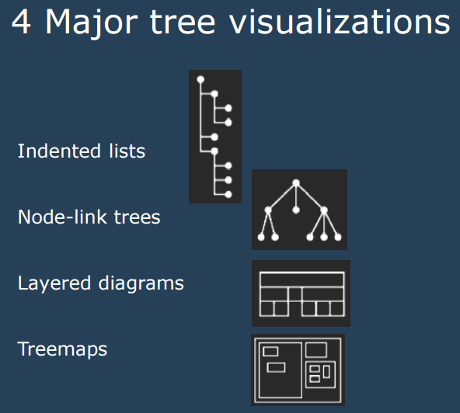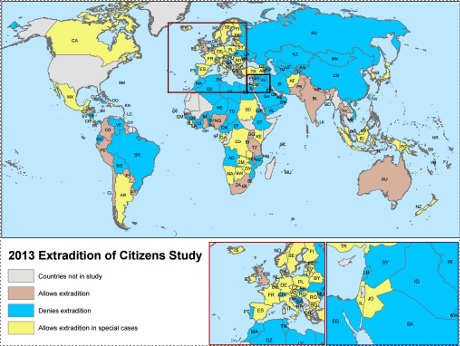Machine Creativity Beats Some Modern Art
From the post:
Creativity is one of the great challenges for machine intelligence. There is no shortage of evidence showing how machines can match and even outperform humans in vast areas of endeavor, such as face and object recognition, doodling, image synthesis, language translation, a vast variety of games such as chess and Go, and so on. But when it comes to creativity, the machines lag well behind.
Not through lack of effort. For example, machines have learned to recognize artistic style, separate it from the content of an image, and then apply it to other images. That makes it possible to convert any photograph into the style of Van Gogh’s Starry Night, for instance. But while this and other work provides important insight into the nature of artistic style, it doesn’t count as creativity. So the challenge remains to find ways of exploiting machine intelligence for creative purposes.
Today, we get some insight into progress in this area thanks to the work of Ahmed Elgammal at the Art & AI Laboratory at Rutgers University in New Jersey, along with colleagues at Facebook’s AI labs and elsewhere.
… (emphasis in original)
This summary of CAN: Creative Adversarial Networks, Generating “Art” by Learning About Styles and Deviating from Style Norms by Ahmed Elgammal, Bingchen Liu, Mohamed Elhoseiny, Marian Mazzone, repeats a mistake made by the authors, that is the misplacement of creativity.
Creativity, indeed, even art itself, is easily argued to reside in the viewer (reader) and not the creator at all.
To illustrate, I quote a long passage from Stanley Fish’s How to Recognize a Poem When You See One below but a quick summary/reminder goes like this:
Fish was teaching back to back classes in the same classroom and for the first class, wrote a list of authors on the blackboard. After the first class ended but before the second class, a poetry class, arrived, he enclosed the list of authors in a rectangle and wrote a page number, as though the list was from a book. When the second class arrived, he asked them to interpret the “poem” that was on the board. Which they proceeded to do. Where would you locate creativity in that situation?
The longer and better written start of the story (by Fish):
[1] Last time I sketched out an argument by which meanings are the property neither of fixed and stable texts nor of free and independent readers but of interpretive communities that are responsible both for the shape of a reader’s activities and for the texts those activities produce. In this lecture I propose to extend that argument so as to account not only for the meanings a poem might be said to have but for the fact of its being recognized as a poem in the first place. And once again I would like to begin with an anecdote.
[2] In the summer of 1971 I was teaching two courses under the joint auspices of the Linguistic Institute of America and the English Department of the State University of New York at Buffalo. I taught these courses in the morning and in the same room. At 9:30 I would meet a group of students who were interested in the relationship between linguistics and literary criticism. Our nominal subject was stylistics but our concerns were finally theoretical and extended to the presuppositions and assumptions which underlie both linguistic and literary practice. At 11:00 these students were replaced by another group whose concerns were exclusively literary and were in fact confined to English religious poetry of the seventeenth century. These students had been learning how to identify Christian symbols and how to recognize typological patterns and how to move from the observation of these symbols and patterns to the specification of a poetic intention that was usually didactic or homiletic. On the day I am thinking about, the only connection between the two classes was an assignment given to the first which was still on the blackboard at the beginning of the second. It read:
Jacobs-Rosenbaum
Levin
Thorne
Hayes
Ohman (?)
[3] I am sure that many of you will already have recognized the names on this list, but for the sake of the record, allow me to identify them. Roderick Jacobs and Peter Rosenbaum are two linguists who have coauthored a number of textbooks and coedited a number of anthologies. Samuel Levin is a linguist who was one of the first to apply the operations of transformational grammar to literary texts. J. P. Thorne is a linguist at Edinburgh who, like Levin, was attempting to extend the rules of transformational grammar to the notorious ir-regularities of poetic language. Curtis Hayes is a linguist who was then using transformational grammar in order to establish an objective basis for his intuitive impression that the language of Gibbon’s Decline and Fall of the Roman Empire is more complex than the language of Hemingway’s novels. And Richard Ohmann is the literary critic who, more than any other, was responsible for introducing the vocabulary of transformational grammar to the literary community. Ohmann’s name was spelled as you see it here because I could not remember whether it contained one or two n’s. In other words, the question mark in parenthesis signified nothing more than a faulty memory and a desire on my part to appear scrupulous. The fact that the names appeared in a list that was arranged vertically, and that Levin, Thorne, and Hayes formed a column that was more or less centered in relation to the paired names of Jacobs and Rosenbaum, was similarly accidental and was evidence only of a certain compulsiveness if, indeed, it was evidence of anything at all.
[4] In the time between the two classes I made only one change. I drew a frame around the assignment and wrote on the top of that frame “p. 43.” When the members of the second class filed in I told them that what they saw on the blackboard was a religious poem of the kind they had been studying and I asked them to interpret it. Immediately they began to perform in a manner that, for reasons which will become clear, was more or less predictable. The first student to speak pointed out that the poem was probably a hieroglyph, although he was not sure whether it was in the shape of a cross or an altar. This question was set aside as the other students, following his lead, began to concentrate on individual words, interrupting each other with suggestions that came so quickly that they seemed spontaneous. The first line of the poem (the very order of events assumed the already constituted status of the object) received the most attention: Jacobs was explicated as a reference to Jacob’s ladder, traditionally allegorized as a figure for the Christian ascent to heaven. In this poem, however, or so my students told me, the means of ascent is not a ladder but a tree, a rose tree or rosenbaum. This was seen to be an obvious reference to the Virgin Mary who was often characterized as a rose without thorns, itself an emblem of the immaculate conception. At this point the poem appeared to the students to be operating in the familiar manner of an iconographic riddle. It at once posed the question, “How is it that a man can climb to heaven by means of a rose tree?” and directed the reader to the inevitable answer: by the fruit of that tree, the fruit of Mary’s womb, Jesus. Once this interpretation was established it received support from, and conferred significance on, the word “thorne,” which could only be an allusion to the crown of thorns, a symbol of the trial suffered by Jesus and of the price he paid to save us all. It was only a short step (really no step at all) from this insight to the recognition of Levin as a double reference, first to the tribe of Levi, of whose priestly function Christ was the fulfillment, and second to the unleavened bread carried by the children of Israel on their exodus from Egypt, the place of sin, and in response to the call of Moses, perhaps the most familiar of the old testament types of Christ. The final word of the poem was given at least three complementary readings: it could be “omen,” especially since so much of the poem is concerned with foreshadowing and prophecy; it could be Oh Man, since it is mans story as it intersects with the divine plan that is the poem’s subject; and it could, of course, be simply “amen,” the proper conclusion to a poem celebrating the love and mercy shown by a God who gave his only begotten son so that we may live.
[5] In addition to specifying significances for the words of the poem and relating those significances to one another, the students began to discern larger structural patterns. It was noted that of the six names in the poem three–Jacobs, Rosenbaum, and Levin–are Hebrew, two–Thorne and Hayes–are Christian, and one–Ohman–is ambiguous, the ambiguity being marked in the poem itself (as the phrase goes) by the question mark in parenthesis. This division was seen as a reflection of the basic distinction between the old dis-pensation and the new, the law of sin and the law of love. That distinction, however, is blurred and finally dissolved by the typological perspective which invests the old testament events and heroes with new testament meanings. The structure of the poem, my students concluded, is therefore a double one, establishing and undermining its basic pattern (Hebrew vs. Christian) at the same time. In this context there is finally no pressure to resolve the ambiguity of Ohman since the two possible readings–the name is Hebrew, the name is Christian–are both authorized by the reconciling presence in the poem of Jesus Christ. Finally, I must report that one student took to counting letters and found, to no one’s surprise, that the most prominent letters in the poem were S, O, N.
…
The account by Fish isn’t long and is highly recommended if you are interested in this issue.
If readers/viewers interpret images as art, is the “creativity” of the process that brought it into being even meaningful? Or does polling of viewers measure their appreciation of an image as art, without regard to the process that created it? Exactly what are we measuring when polling such viewers?
By Fish’s account, such a poll tells us a great deal about the viewers but nothing about the creator of the art.
FYI, that same lesson applies to column headers, metadata keys, and indeed, data itself. Which means the “meaning” of what you wrote may be obvious to you, but not to anyone else.
Topic maps can increase your odds of being understood or discovering the understanding captured by others.



